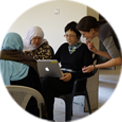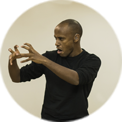Effects of Language Modality, Age, and Usage on Phonological Complexity in Three Sign Languages
Hope Morgan, Rama Novogrodsky, and Wendy Sandler
University of Haifa
Given the high degree of simultaneous phonological encoding in sign language, there has long been an interest in understanding what, if anything, constrains the combinatoric possibilities of components in a signed word. Constraints that restrict highly complex articulations are observed for the two hands (Battison 1978), features of hand configuration (Sandler 1996), and the number of simultaneous movements (Brentari 1998). Yet while these studies assume similar constraints on phonological complexity across sign languages, no previous analysis has tried to quantify complexity for multiple parameters across an entire sign language lexicon.
In this talk, we use a per-sign complexity index to compare three sign languages (SLs) with different histories: American SL, Israeli SL, and Kenyan SL. We find that all three languages show a similar distribution overall, which is highly skewed toward less complexity; yet statistical differences emerge that suggest an increase in complexity for older languages. We also find that how frequently a sign is used is correlated with its complexity: more common signs are significantly less phonologically complex. Two possible factors are discussed: (i) a downward pressure that restricts complexity over time, and (ii) an upward pressure for increasing discriminability and gradual accretion of complexity.







